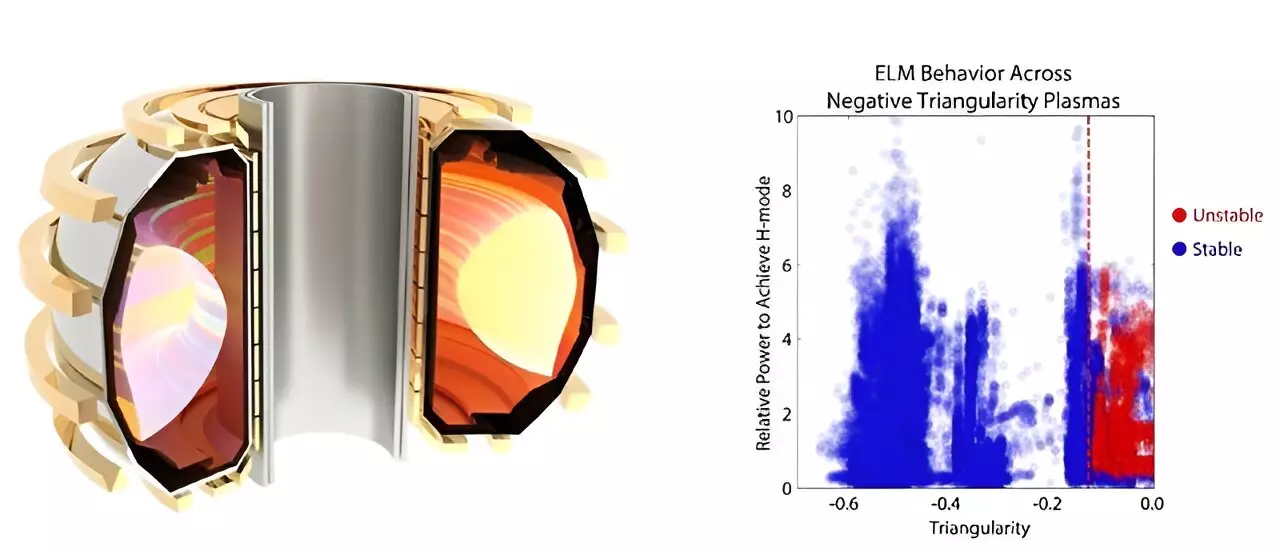Fusion power plants hold great promise as a clean and sustainable source of energy for the future. However, in order to be commercially viable, these plants must be able to create and sustain the plasma conditions necessary for fusion reactions. One of the challenges faced in this process is the development of instabilities such as edge localized modes (ELMs) in high-density and high-temperature plasmas.
Researchers have identified the cross-sectional shape of the plasma, known as plasma triangularity, as a key factor in influencing the stability of the plasma. While most studied plasmas exhibit positive triangularity with a D-shaped cross-section, recent research has explored the effects of negative triangularity, where the vertical portion of the shape is near the outer wall of the tokamak. Negative triangularity plasmas have been found to exhibit self-regulation of gradients, making them inherently free of instabilities.
A recent study published in Physical Review Letters examined the impact of negative triangularity shaping on the stability of plasmas in fusion power plants. The researchers analyzed data from the DIII-D National Fusion Facility program and found that plasmas with negative triangularity were free of potentially damaging instabilities in the edge region of the plasma. This shaping not only stabilized the plasma edge but also maintained high core performance, crucial for achieving the burning plasma conditions necessary for future fusion power plants.
Experiments conducted at the DIII-D National Fusion Facility tokamak further supported the findings of the study. By exploring the use of negative triangularity shaping, researchers were able to limit the development of ELMs, even under high heating power and core performance conditions that typically lead to instabilities. Plasmas with strong negative triangularity exhibited exceptional stability, showing no instabilities even in challenging plasma conditions.
The results of this research suggest that negative triangularity shaping has the potential to address one of the major challenges in fusion power plant design. By limiting high-energy plasma instabilities, this approach could pave the way for more stable and efficient fusion reactors. The study highlights the importance of exploring alternative shaping techniques and further investigating the application of negative triangularity in fusion power plant design.
The study offers valuable insights into the role of plasma triangularity in shaping the stability of fusion plasmas. By demonstrating the effectiveness of negative triangularity in stabilizing plasma instabilities, this research opens up new possibilities for enhancing the design and performance of future fusion power plants. Further exploration of negative triangularity shaping is warranted to fully realize its potential in advancing fusion energy technology.


Leave a Reply